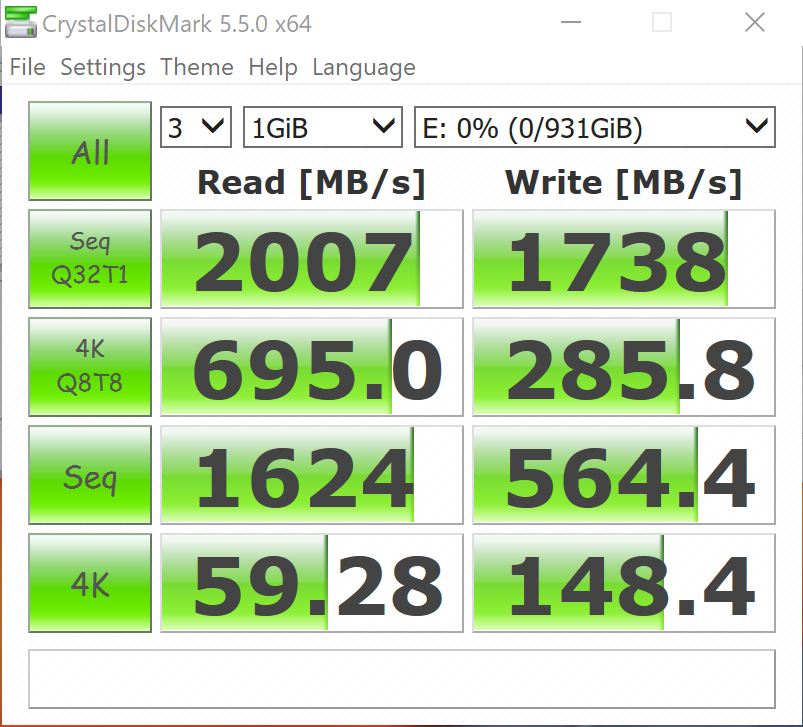CRYSTAL DISK BENCHMARK VER. 5.5.0 X64
Crystal Disk Benchmark is used to measure read and write performance through sampling of random data which is, for the most part, incompressible. Performance is virtually identical, regardless of data sample so we have included only that using random data samples.
Once again we see the crucial P1 matching listed specs and the low 4K random write performance is pretty much as expected.
The toughest benchmark available for solid state drives is AS SSD as it relies solely on incompressible data samples when testing performance. For the most part, AS SSD tests can be considered the ‘worst case scenario’ in obtaining data transfer speeds and many enthusiasts like AS SSD for their needs. Transfer speeds are displayed on the left with IOPS results on the right.
AS SSD performance results provide us with the first real glimpse of QLC memory limitations that we might see today. Where performance is typically a bit lower as we see with most SSDs when testing with AS SSD, IOPS are considerably less, although right where Crucial advertises. In today’s mainstream SSDs, we are fortunate to see results above 500,000 IOPS read and write, however, what we see here might be considered normal for QLC memory. The question really is though… Why would any consumer really even concern themselves with IOPS in the first place? And we might agree with that 100%.
ANVIL STORAGE UTILITIES PROFESSIONAL
Anvil’s Storage Utilities (ASU) are the most complete test bed available for the solid state drive today. The benchmark displays test results for, not only throughput but also, IOPS and Disk Access Times. Not only does it have a preset SSD benchmark, but also, it has included such things as endurance testing and threaded I/O read, write and mixed tests, all of which are very simple to understand and use in our benchmark testing.
AJA VIDEO SYSTEM DISK TEST
The AJA Video Systems Disk Test is relatively new to our testing and tests the transfer speed of video files with different resolutions and Codec.
 The SSD Review The Worlds Dedicated SSD Education and Review Resource |
The SSD Review The Worlds Dedicated SSD Education and Review Resource | 


Other sites, like anandtech, show how the drives performance drops off when the drive is full. This is especially relevant to QLC ssds.
Do you have any intention of creating tests to run a full drive?
Thanks!